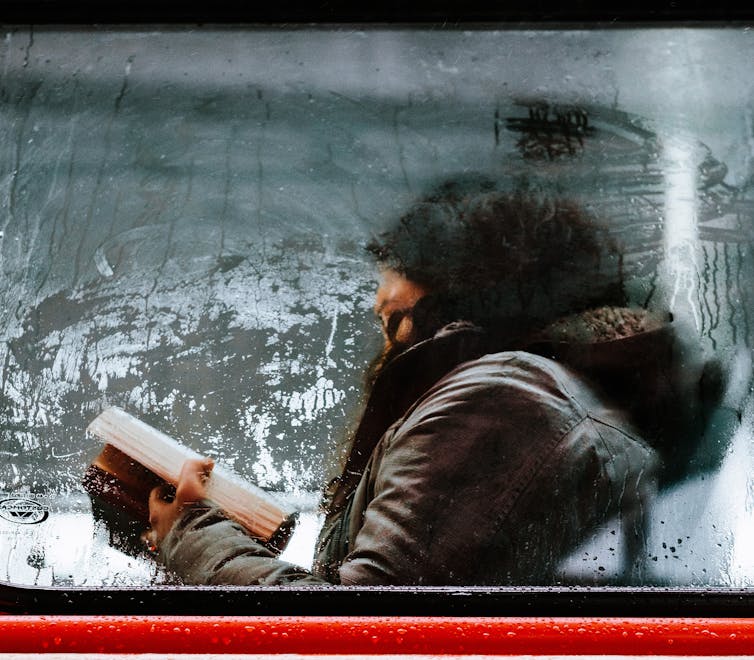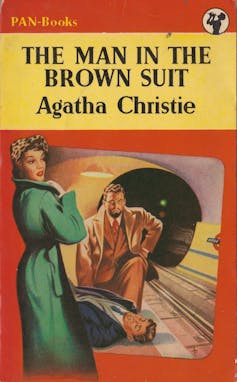Conversation Five books by women
Comment: Five books by women, about women, for everyone
Published on: 7 March 2018
Writing for The Conversation, Dr Stacy Gillis discusses women's writing and selects novels about women and independence.

Women’s writing has long been a thorn in the side of the male literary establishment. From fears in the late 18th century that reading novels – particularly written by women – would be emotionally and physically dangerous for women, to the Brontë sisters publishing initially under male pseudonyms, to the dismissal of the genre of romance fiction as beyond the critical pale, there has been a dominant culture which finds the association of women and writing to be dangerous. It has long been something to be controlled, managed and dismissed.
One of the ways that publishers, booksellers and critics use to “manage” literature is through the notion of genre: labelling a book as “detective fiction” becomes an easy way to identify particular tropes in a novel. These genre designations are particularly helpful for publishers and booksellers, with the logic running something like this: a reader can walk into any bookstore, anywhere, and go to the detective fiction section and find a book to read, because s/he has read detective fiction before and enjoyed it.
What complicates this is who makes the decision of which genres are deemed to be appropriate, and which books are put into which category. Genre is also complicated by the idea of women’s writing. Can we have a genre that is designated solely by the sex of the author? What if we turned this around, and rather than a genre, women’s writing was a term we used to simply celebrate writing about women?
Here are five novels by women – and about women – from across the 20th century. These novels all grapple, in very different ways, with women and independence.
Agatha Christie, The Man in the Brown Suit (1924)

Anna Beddingfeld, a self-mocking heroine, who is very aware of the conventions of gender and genre, impulsively buys a ticket to South Africa because the boat fare is the exact amount she has left in the world. She ends up taking down an international crime syndicate with aplomb and panache.
Lucy Maud Montgomery, The Blue Castle (1926)
Doss is the expendable unmarried older woman in a Victorian novel. But in this story, she walks out on her largely uninterested family to move into a cabin on an island with a man she has met only briefly. A fantasy of the Canadian wilderness, the novel was one of Montgomery’s few novels for adults.
Mary Stewart, Nine Coaches Waiting (1958)
A rewriting of Jane Eyre, the novel contains all the tropes of the Gothic romance – a castle, a family secret, murder – but these are challenged by one of Stewart’s finest protagonists, Linda Martin. Martin is employed as a governess by an aristocratic family, but rejects the trappings of romance to protect her charge, and her own integrity.
Octavia Butler, Kindred (1979)
Edana Franklin wakes up in hospital with her arm amputated and the police questioning her husband. It is revealed that she has been travelling back to 1815, where she comes into repeated contact and conflict with Rufus, one of her slave-owning ancestors. A novel that raises important questions about masculinity, power and violence.
Shirley Jackson, Patchwork Girl (1995)
One of the earliest pieces of electronic fiction, this retelling of Shelley’s Frankenstein (1818) and Baum’s The Patchwork Girl (1913) places the narrative in the hands of the reader, who pieces together the story through illustrations of parts of a female body.
Often popular novels by women have a narrative arc that is visible from the outset: the protagonists will find a romantic partner in the end. In some of the above books, some of the women do, and some of them don’t, find a romantic partner. For those who do, the romance is secondary to the work they do, and the choices that they make about their own lives.
What unites the novels is an exploration of the choices that some women have to make as a result of their sexed and gendered embodiment, whether travelling to South Africa on a whim, being jolted unwillingly back onto a slave plantation, or making an explicit call to the (woman) reader to make choices about how the electronic story develops.
Writing about women (and often by women) gives us some examples of how to challenge the status quo, if only for a little while. Each challenge, however, provides another example of how to effect change in a patriarchal culture. Here’s to the writers about women who have done this – from Jane Austen to Shirley Jackson, from Frances Burney to Josephine Tey, and from Angela Carter to Val McDermid.
Stacy Gillis, Lecturer in Modern and Contemporary Literature, Newcastle University
This article was originally published on The Conversation. Read the original article.



